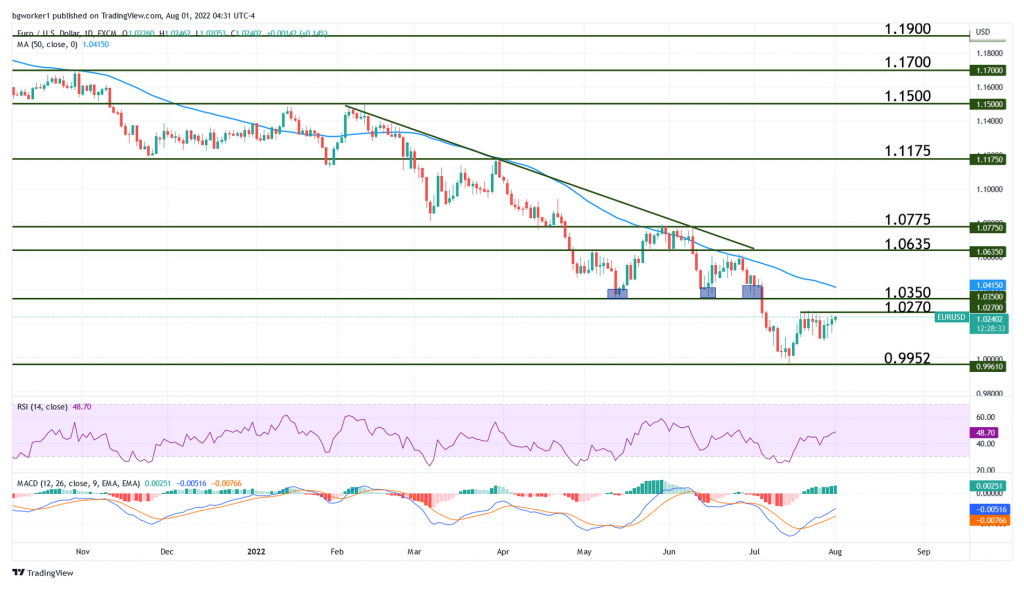Stubborn Inflation Spoils US Dollar’s Advance
The Labour Market Takes Center Stage – All Eyes on the NFP Report.
Despite the Fed’s continued efforts to combat inflation, Friday’s PCE Index showed a monthly increase of 0.6%, double the previous reading and higher than the 0.5% estimate. The greenback slowed down its ascent, allowing the Euro to erase some of its losses.
The single currency inched higher last week, mostly due to a weaker US Dollar. The weakness seems largely triggered by a speculated shift in the Fed’s interest rate policy, with some voices touting a slower pace of the rate hikes. It remains to be seen whether the market participants are getting ahead of themselves or not.
Key Data for the Week Ahead
The schedule for the Euro is light and without major announcements, thus the focus will be almost entirely on the greenback. The U.S. Services PMI will be released Wednesday at 2:00 pm GMT but the impact is usually medium, especially if the actual reading comes close to the estimate.
The most important release of the week will be the Non-Farm Employment report (aka Non-Farm Payrolls – NFP), which is scheduled for release Friday at 12:30 GMT. The NFP is expected to show that 250K jobs were created during the previous month (excluding the farming industry), which is significantly lower than the previous 372K.
For the whole picture, traders should keep an eye on the Unemployment Rate (previous: 3.6%; no change anticipated) and the Average Hourly Earnings (previous 0.3%; no change anticipated). These two reports come out at the same time as the NFP and all three together are known to generate strong volatility.
Technical Outlook – EUR/USD
After hitting a multi-year low at 0.9952, the Euro erased some of the losses and managed to take the pair above parity, reaching a high at 1.0278. Currently, the bulls are trying to break this high, aiming for the previous support located at 1.0350.
The MACD is pointing up, with the lines spread apart, indicating bullish momentum and the Relative Strength Index is also pointing up, coming out of oversold. As far as these technical indicators are concerned, the pair still has room to move north, at least until it touches the potential resistance at 1.0350 and the 50-day Moving Average.
We can expect choppy price action for most of the week until the jobs data comes out. The short-term bias is bullish but let’s not forget that the pair is in a strong and long-term downtrend which increases the probability of a bearish move as soon as resistance is hit.
